Text
Monuments That Remain a Mystery
Monuments That Remain a Mystery
From castles, cathedrals and palaces to miles-long bridges, golden temples and sky-scraping glass towers, the world is full of magnificent feats of architectural engineering. While the purpose of most of these structures is known, there are still plenty of man-made monuments that boggle the minds of even the most acclaimed scientists and archaeologists.
Arkaim
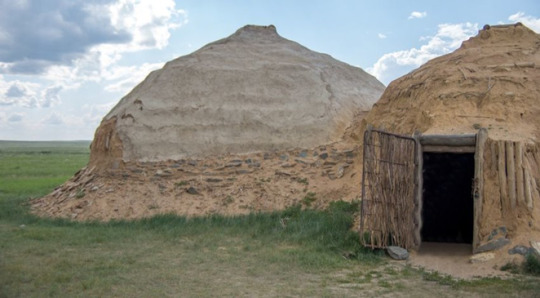
Arkaim is to Russia what Stonehenge is to England. A team from the University of Chelyabinsk discovered this ancient settlement in Russia’s Southern Urals in 1987. Estimates date it to around the 17th century B.C., although it has the potential to be older. The settlement has a radial setup, with two circular walls encompassed by a defensive system and moat. Inside were around 60 adobe houses. Many agree that it functioned as a fortress, residential community, social center and temple. Astrologers have also likened it to Stonehenge due to its latitude and location, which would suggest its use as a celestial observatory. Nevertheless, nobody is certain who actually lived here.
Carnac Stones

The Carnac Stones are a group of over 3,000 megalithic standing stones in the French village of Carnac, Brittany. These stones date back to the Neolithic period and are one of the world’s largest collections of menhirs. There’s no real evidence to confirm their purpose, but that hasn’t stopped researchers from hazarding guesses. Some say they were used as calendars and observatories by farmers and priests. According to Christian mythology, the stones are pagan soldiers petrified by Pope Cornelius. Local folklore implies that the stones stand in straight lines because they were once part of a Roman army. The story goes on to say that the Arthurian wizard Merlin turned the Romans to stone.
Easter Island
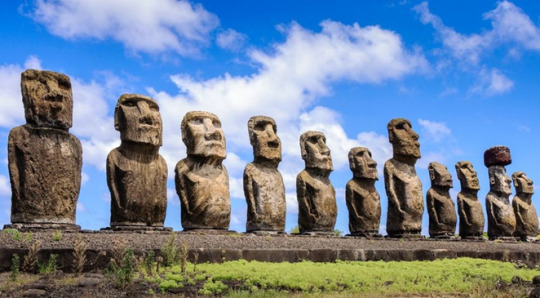
Over 2,000 miles from the coast of Chile is Easter Island (Isla de Pascua), the one-time home of a Polynesian tribe called the Rapa Nui. Scattered across the island are around 1,000 moai, which are giant hand-carved stone statues of human-like characters. The Rapa Nui landed on the island sometime in the 4th century and are believed to have started making the moai in the 7th century. Weighing up to 82 tons, it’s hard to imagine how they were transported and hauled into place. One theory is that the islanders used a system of ropes and tree trunks. Their purpose has also been the subject of debate. To the Rapa Nui the statues may have stored sacred spirits.
Nazca Lines
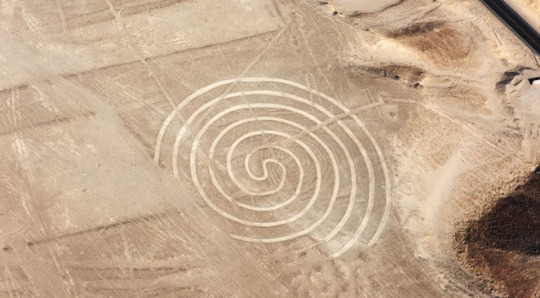
In Peru’s Nazca Desert are hundreds of geometric designs. These ancient geoglyphs range from simple shapes to plants and animals such as a hummingbird, monkey, llama and whale. The Nazca Lines date back to around 200 to 700 A.D., when the Nazca people lived in the region. Researchers have struggled to agree upon the purpose of these giant works of art. Among many theories are astronomical maps, indicators of sacred routes and water troughs. They are best seen from the surrounding hills and by plane. This suggests that perhaps they were created to be observed by deities from the sky.
Stone Spheres of Costa Rica

In Costa Rica’s Diquis Delta are a group of around 300 polished stone spheres, some just a few inches in diameter and others measuring up to seven feet and weighing 16 tons. Employees of the United Fruit Company happened across the spheres in the 1930s while clearing a jungle in order to start a banana plantation. Scientists have so far been unable to pinpoint an exact date of their origin, instead suggesting that they appeared anytime between 200 B.C. and the 1500s. They are commonly attributed to the Diquis people, yet the purpose is a mystery. Theories range from property markers of ancient chiefs to remnants of the lost city of Atlantis. Some were even detonated in the hope of finding gold inside.
Temple of Bacchus
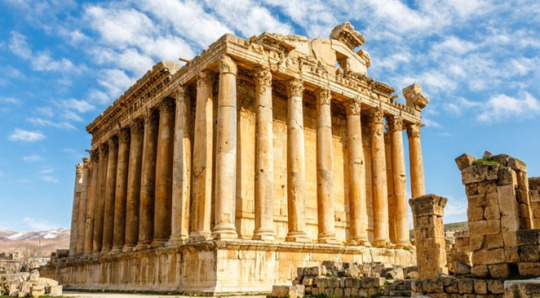
In northeastern Lebanon is the Baalbek temple complex, one of the most iconic and intriguing Roman ruins on the planet. It’s prized possession is the well-preserved and monumental Temple of Bacchus. The age of the temple is unknown, although it was most likely erected in the 2nd century. General opinion is also that emperor Antoninus Pius commissioned it in honor of Bacchus, the god of wine and intoxication. What has been baffling archaeologists ever since the temple’s discovery is how the Romans succeeded in building it. It is almost impossible to think that humans could hoist the 42 Corinthian columns of the colonnade, each 62-feet-tall and 7.5 feet in diameter
0 notes
Text
Oldest Churches in the U.S.
The United States is host to a vast collection of historical places of worship, including many churches that were erected by Spanish missionaries, the Pilgrims, and Puritans, Quakers, Native Americans, and others. Aside from their spiritual significance, churches are appealing to many types of travelers — from devotees and history buffs to art and architecture enthusiasts. Below, visit 10 of America’s oldest churches that are still standing, either in their original forms or as reconstructions.
Grace Episcopal Church, Yorktown, Virginia

Located in the riverside town of Yorktown, Grace Episcopal Church dates back to 1697 and was originally built from marl extracted from the banks of the York River. Only the walls of the church survived a fire that ravaged the city in 1814. It was then rebuilt to its present-day Greek-Revival design. During the 1700s, several of the Founding Fathers were regular attendees at the church, including Thomas Nelson, Jr. — who on August 2, 1776, was among the 56 congressional delegates who signed the Declaration of Independence. Nelson, Jr. is buried in the adjacent cemetery, along with the grave of Nelson his grandfather, the early Yorktown pioneer Thomas “Scotch Tom” Nelson.
St. Luke’s Church, Benns Church, Virginia
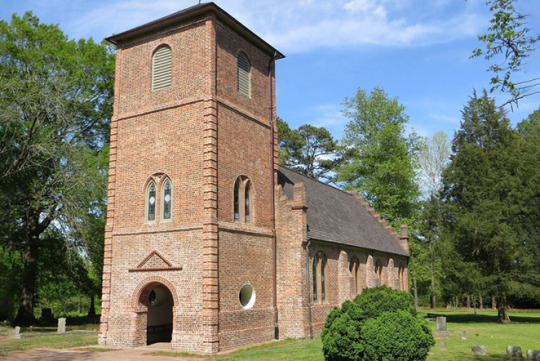
St. Luke’s Church is one of few remaining examples in America of the 17th-century Artisan Mannerism architectural style. Much of the brick exterior is from the original building and features elements of Romanesque, Gothic, and Jacobean designs. According to legend, the church was founded in 1632; however, archaeological examinations date it to between1685 and 1687. Today the church operates as a museum and holds community preservation workshops. It’s open for guided tours, which allow visitors to journey through the history of the landmark and its grounds. Local volunteers work from spring to fall on the restoration of the gardens and the old tombstones of the cemetery.
Old Dutch Church of Sleepy Hollow, Sleepy Hollow, New York
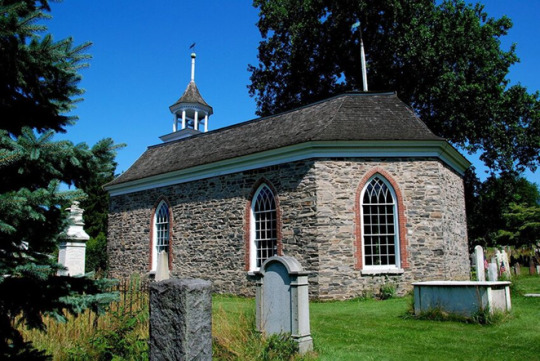
Old Indian Meeting House, Mashpee, Massachusetts
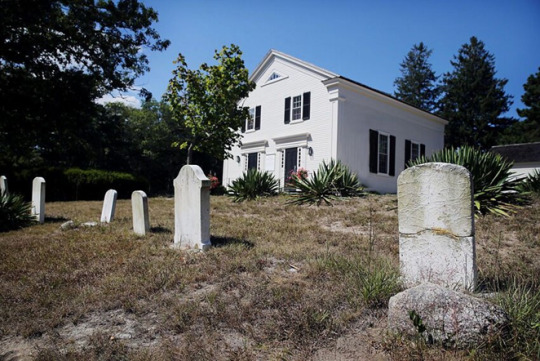
The Old Indian Meeting House lays claim to being both the oldest church on Cape Cod and the oldest Native American church in the eastern U.S. It was erected in 1684 as a place of worship for the Mashpee Wampanoag people, who had converted to Christianity after coming into contact with European settlers. However, there is some debate as to the origins of the church. The most widely accepted story is that it was raised and moved to its current location in 1717. However, some historians challenge this and believe that it was built in the late 1750s. Either way, it stands today as a prime example of religious colonial architecture on Cape Cod.
Third Haven Meeting House, Talbot County, Maryland
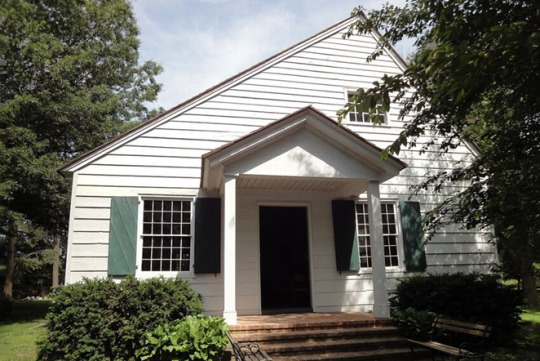
In the mid-1600s, Quakerism had arrived in Maryland’s Talbot County via England, and by the 1660s, at least four meetings of Quakers (also known as the Society of Friends) were recognized in the area. The Friends would gather at the homes of their members, but they soon recognized the need for a permanent meeting house for their burgeoning religious society. In 1682, the Quakers purchased land in the town of Easton to build the Third Haven Meeting House. The house is considered the oldest surviving Quaker church and continues to welcome worshippers today. Well-known English Quakers, such as the writer William Penn worshipped here.
Old Ship Church, Hingham, Massachusetts
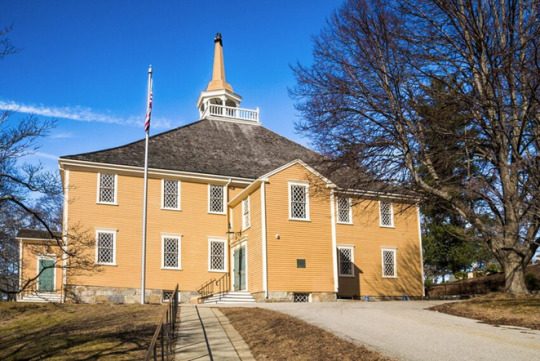
The 340-year-old Old Ship Church in Hingham, Massachusetts, is the country’s oldest building that has continuously functioned as a church. After opening in 1681, this Elizabethan Gothic-style church was used for both civic assemblies and Sunday worship. It’s also known as the Old Ship Meetinghouse, a reference to the Puritans that called their churches meetinghouses. The name "Old Ship" stems from the unique open-timber roof, which is said to resemble a ship. Many of the features, including the walls and frame, date back to the original 17th-century construction. Every February, the church is the focal point for Hingham’s Lincoln Day celebrations — members of Abraham Lincoln’s family, including his great-grandfather Samuel Lincoln, played a role in the development of Hingham.
Old Trinity Church, Church Creek, Maryland
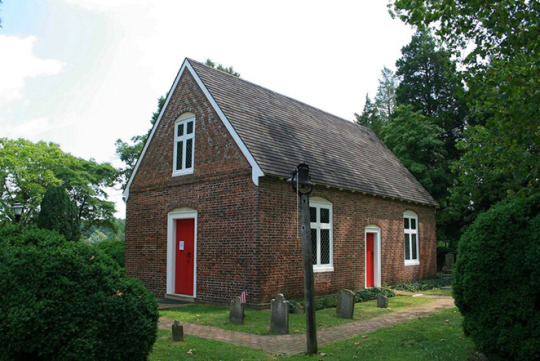
The Old Trinity Church rests on a quiet tributary of the Little Choptank River, founded in 1671 by English settlers to accommodate their growing community on Maryland’s Eastern Shore. The main part of the church measures just 38 feet long and 20 feet wide, but despite the modest quarters it hosts an active worship schedule to this day. An 1853 renovation project gave the religious landmark its Gothic appearance. Notable aspects of the interior include the original black walnut altar, a coat of arms of Queen Anne, and a copy of the King James Bible (also known as the Authorized Version). The tombstones of veterans from American wars lay scattered around the cemetery. Also interred here is Anne Ella Carroll, a lobbyist who was a respected advisor of Abraham Lincoln’s presidential cabinet.
Jamestown Church, Jamestown, Virginia

Jamestown Church has a fascinating history that traces back to the foundation of Jamestown, the first permanent English settlement in North America. It stands within the grounds of the 17th-century James Fort, which is now known as the Historic Jamestowne preservation site. A wooden church was first erected here in 1607, but it burned down a year later. Two more timber structures were built and fell into disrepair before construction of a brick church began in 1639. That church succumbed to fire damage during Bacon’s Rebellion in 1676, but the tower of the brick building survived, and a reconstruction of the 1639 church was added to the tower in 1907. It’s now open as a museum and displays the foundations of two of the earlier churches.
San Estevan del Rey Mission Church, Acoma Pueblo, New Mexico

Following the arrival of explorer Juan de Oñate in New Mexico in 1598, the Spanish constructed missions in an attempt to impose their Christian beliefs on the Pueblo Native Americans. In 1629, Franciscan monks established the San Estevan del Rey Mission in the Acoma Pueblo. It took 12 years to complete the adobe-style building, which features elements of both Spanish colonial and Puebloan architecture. Timber for the roof was sourced from the San Mateo Mountains and most likely carried to the village by foot. Many of the adobe structures of Acoma were also built during the same period. The mission and pueblo are now located within the Acoma reservation, where tribespeople lead tours that delve into the history and traditions of their culture.
San Miguel Chapel, Santa Fe, New Mexico

Although some historians disagree over its original construction and subsequent reconstruction, San Miguel Chapel is generally regarded as the oldest church in the U.S. The most widely accepted belief is that the Tlaxcalan peoples built this adobe chapel sometime between 1610 and 1628, under the guidance of Franciscan monks. During the Pueblo Revolt in 1680, the roof of the chapel burned and wasn’t repaired until the Spanish returned to Santa Fe. A renovation project took place in 1710 — some historians say it was a complete rebuild, while others see it as a refurbishment using the original shell. In 1955, archaeologists discovered the 17th-century floors of the church and several Tlaxcalan graves. The chapel serves as an important monument on the Santa Fe Trail. Its interior is decorated with resorted reredos and paintings from the 18th and 19th centuries.
1 note
·
View note
Text

Juneteenth (short for “June Nineteenth”) marks the day when federal troops arrived in Galveston, Texas in 1865 to take control of the state and ensure that all enslaved people be freed. The troops’ arrival came a full two and a half years after the signing of the Emancipation Proclamation. Juneteenth honors the end to slavery in the United States and is considered the longest-running African American holiday. On June 17, 2021, it officially became a federal holiday.
Confederate General Robert E. Lee had surrendered at Appomattox Court House two months earlier in Virginia, but slavery had remained relatively unaffected in Texas—until U.S. General Gordon Granger stood on Texas soil and read General Orders No. 3: “The people of Texas are informed that, in accordance with a proclamation from the Executive of the United States, all slaves are free.”
1 note
·
View note
Text
PRIDE MONTH
Two-Spirit (also two spirit or, occasionally, twospirited) is a modern, pan-Indian, umbrella term used by some Indigenous North Americans to describe Native people in their communities who fulfill a traditional third-gender (or other gender-variant) ceremonial and social role in their cultures.



0 notes
Text

Flag Day is celebrated in America on June 14, commemorating the day the first flag resolution was passed.
On June 14, 1777, less than one year after Betsy Ross had received the order from General Washington to make the first flag, the Second Continental Congress passed a flag resolution stating:
Resolved, That the flag of the United States be thirteen stripes, alternate red and white; that the union be thirteen stars, white in a blue field, representing a new Constellation.
The first national observance of Flag Day was on June 14, 1877; 100 years after the flag resolution was adopted by the Continental Congress.
In the late 19th century, schoolteachers all over the United States began conducting patriotic ceremonies commemorating Flag Day as a way to teach children about history. One such schoolteacher, Bernard J. Cigrand, is often referred to as the “Father of Flag Day.” He lobbied Congress for many years for Flag Day to be officially observed.
Other patriotic groups, including the Colonial Dames and the Sons of the American Revolution, also spent years trying to convince Congress to make Flag Day official. In 1916, President Woodrow Wilson issued a proclamation stating that June 14 shall be National Flag Day, and in 1949, it was made official by an Act of Congress.
On June 14, 1891, the Betsy Ross House began publicly celebrating Flag Day, and has been celebrating Flag Day every year since 1911. Since 2008, the Betsy Ross House has revived the patriotic zeal of the earliest celebrations with Flag Fest – an all day, old-fashioned, family fun street fair with games, live entertainment, a patriotic pet contest, shopping and more, celebrated on the Saturday before Flag Day.
0 notes
Text
PHRASES SHAKESPEARE COINED WE STILL USE TODAY
Love is blind
– "The Merchant of Venice," "Henry V," and "The Two Gentlemen of Verona"
Shakespeare used this phrase in three of his plays, in reference to the way love can make us overlook the flaws in those we love (for good and for bad). In The Merchant of Venice, Jessica says “But love is blind and lovers cannot see the pretty follies that themselves commit.” It remains a common phrase today.
In a pickle
– "The Tempest"
When King Alonso asks his jester, Trinculo, “How camest thou in this pickle?,” the jester replies “I have been in such a pickle since I saw you last.” Pickle here has a double meaning: Trinculo is both in trouble (the current usage of “in a pickle”) and drunk (he is pickled).
Green-eyed monster
– "Othello"
When the evil Iago sows the seeds of doubt in Othello's mind regarding his wife's faithfulness, he tells him, “O, beware, my lord, of jealousy! It is the green-eyed monster which doth mock the meat it feeds on.” We still use “green-eyed monster” in reference to jealousy in all its forms.
Cold-blooded
– "King John"
When Constance expresses her anger towards her supposed allies, she rails against them with “Thou cold-blooded slave, hast thou not spoke like thunder on my side?” Shakespeare used “cold-blooded” before it was used in a biological sense (for reptiles and fish), to express an unfeeling, callous, or deliberately cruel action. Today it is often used to refer to “cold-blooded killers.”
Salad days
– "Antony and Cleopatra"
Cleopatra refers to her prior relationship with Julius Caesar as occurring during “My salad days, when I was green in judgment.” Salad days refers to a time of carefree innocence and youthful inexperience (the salad being green, as in immature). We use the expression in a similar way today, although it can also refer to a heyday or “the golden years.”
Break the ice
– "The Taming of the Shrew"
When Tranio speaks with Petruchio about how to woo the hard-hearted Katherine, he tells him to “…break the ice, and do this feat, achieve the elder, set the younger free.” Break the ice, in this sense, is a metaphor for the cold Katherine. Today it has a more general use, meaning to relieve tension or get the conversation going at a party or other social gathering, or when people meet for the first time.
As dead as a doornail
– "Henry VI, Part II"
This expression has been in use since at least the 14th century and was common in Shakespeare’s time. But its survival to this day probably has a lot to do with its appearance in Shakespeare’s play, when the rebel leader Jack Cade says, “…come thou and thy five men, and if I do not leave you all as dead as a doornail, I pray God I may never eat grass more.”
Cruel to be kind
– "Hamlet"
Having killed Polonius earlier in the scene, and while berating his mother Gertrude, Hamlet says, “I will bestow him, and will answer well, The death I gave him. So again good night. I must be cruel only to be kind.” He is telling Gertrude that he must be cruel to her for her own good—the same way in which we use the expression today.
Foregone conclusion
– "Othello"
After Othello has a dream in which his lover Desdemona was unfaithful to him, he was convinced that it was true: “But this denoted a foregone conclusion.” Thanks to The Bard, the phrase has stuck around since 1604.
Knock, knock! Who’s there?
– "Macbeth"
It’s possible that the now ubiquitous “knock, knock” jokes began with Shakespeare. The porter in Macbeth, while pretending he’s the gatekeeper in hell, uses the phrase a number of times, such as, “Knock, knock! Who’s there, in th' other devil’s name?”
One fell swoop
– "Macbeth"
When Macduff hears that his family and servants have all been killed, he laments: “What, all my pretty chickens and their dam at one fell swoop?” While most people know what “one fell swoop” means (suddenly, or in a single, quick action), not many people know where the “fell” comes from. The “fell” used by Shakespeare is an old word that we no longer use, apart from in this phrase, meaning evil or cruel.
The world is your oyster
– "The Merry Wives of Windsor"
This phrase has changed slightly over the centuries. It originally appeared in a line by the character Pistol: “Why then the world’s mine oyster, which I with sword will open.” In the context of the play, it had a violent connotation, as Pistol wanted to forcibly open the metaphorical oyster to obtain money. Now we use it in a far more positive way, to convey that all is possible and anything can be achieved.
1 note
·
View note
Text
A Look at Some of the Most Beautiful and Interesting Places on Earth
Keukenhof Park, Holland: The Netherlands

Holland is known around the world for its rainbow-hued fields of tulips, especially those located in and around Keukenhof. Millions of bulbs are planted in the park each year—visit in mid-April to see the flowers during their peak season.
Cappadocia, Turkey

Cappadocia, an area in Turkey where entire cities have been carved into rock, is pretty incredible on its own. But whenever hot-air balloons pepper the sky, its beauty level simply skyrockets.
Arashiyama: Kyoto, Japan

The serene beauty of the bamboo forest in the Arashiyama district is a wonderful site to behold.
Salar de Uyuni: Daniel Campos, Bolivia
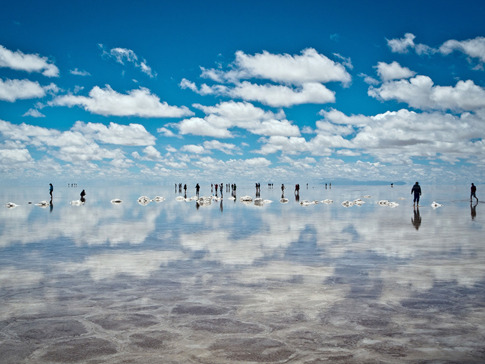
The reflective surface of the world's largest salt mine is like something from the imagination of Salvador Dali—although we're happy it actually exists in real life.
Bryce Canyon: Bryce, Utah

Bryce Canyon's layered red and orange rock pillars, known as hoodoos, make it a can't-miss destination for campers and shutterbugs alike.
Mù Cang Chải: Vietnam

Mù Cang Chải manages to be one of the most breathtaking spots in Vietnam, with terraced rice fields and mountainous landscapes.
Vatnajökull: Iceland

The largest glacier in Iceland is also one of the country's most beautiful sites. The landscape under the glacier is like a whole other world, complete with ice caves, canyons, and volcanoes.
Pyramids of Giza: El Giza, Egypt

Giza's three great pyramids are mysterious marvels of architecture.
Okavango Delta: Botswana

The lush Okavango Delta is like a real-world Eden, where cheetahs, zebras, buffalo, and rhinos roam freely.
Namib Desert: Namibia

Red sand dunes and skeletal trees make Namibia the closest thing we have to Mars on Earth.
Cliffs of Moher, Ireland
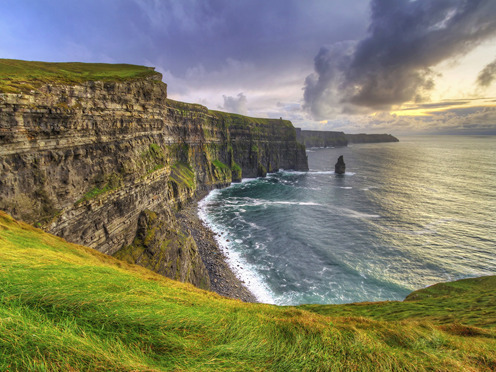
You might know them better as the Cliffs of Insanity from The Princess Bride, but this seaside wonder is actually located just south of Galway. Inconceivable!
Benagil Sea Cave: Algarve, Portugal
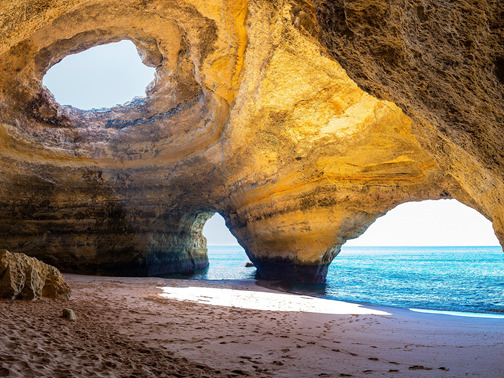
The southern coast of Portugal is lined with exquisite beaches and caves, including the famous Benagil Sea Cave (skylight included).
Ashikaga Flower Park: Ashikaga, Japan

Ashikaga's wisteria trees bloom brilliantly for a few weeks every spring, turning the park into a vision of pastel pinks and purples.
Paro Taktsang: Bhutan

Paro Taktsang, also known as "The Tiger's Nest" monastery, hangs on a cliffside precipice more than 10,000 feet above the ground. If the intricate temple complex doesn't wow you, then the sweeping views of the Paro valley surely will.
Kolukkumalai

Situated more than 8,000 feet above sea level, Kolukkumalai is the highest tea estate in the world—and easily the most beautiful.
The Great Blue Hole: Belize

Known for its circular shape and strikingly deep blue color, the Great Blue Hole is a 1,000-foot-wide sinkhole in the middle of Belize's Lighthouse Reef. While an aerial shot is enough to convince anyone of its beauty, scuba divers are the ones who get to experience the wonders that lie beneath—massive limestone stalactites and stalagmites that formed during the last glacial period.
Venice, Italy

Of all the amazing cities in Italy, there is something truly enchanting about the sunlit canals of Venice.
Halong Bay: Vietnam

Halong Bay, located in northeast Vietnam, is beloved for its blue waters and spread of limestone islands, all occupied by tropical trees and wildlife.
Moravian Fields: Czech Republic
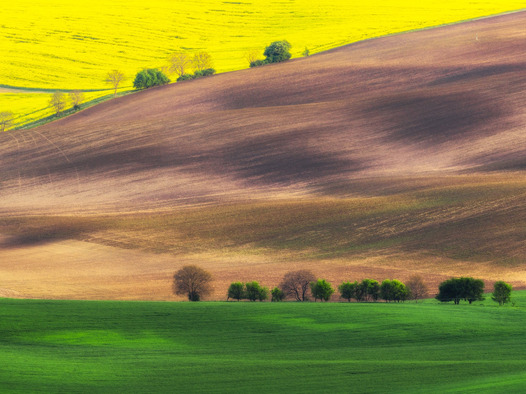
It's more believable to think the Moravian Fields are the product of an oil painter's genius brushstrokes, but these pastel-colored hills are very much a reality.
Na'Pali Coast: Kauai, Hawaii

Kauai boasts one of the world's most insanely beautiful coastlines, which makes you work a bit to soak up its wonders—Na'Pali can only be seen from a helicopter, catamaran, or rather grueling hike.
Serengeti National Park: Tanzania

Tanzania's portion of the Serengeti is the ideal location for an African adventure.
Lavender fields: Provence, France

The seemingly endless stretches of lavender fields make Provence one of the prettiest (and best-smelling) places in France.
Fernando de Noronha: Brazil

This archipelago off the northeast coast of Brazil consists of 21 islands, featuring some of the best beaches and most beautiful landscapes in the country. Think waterfalls, towering cliffs, stretches of white sand, and (maybe best of all) limited tourists.
The Arctic Circle
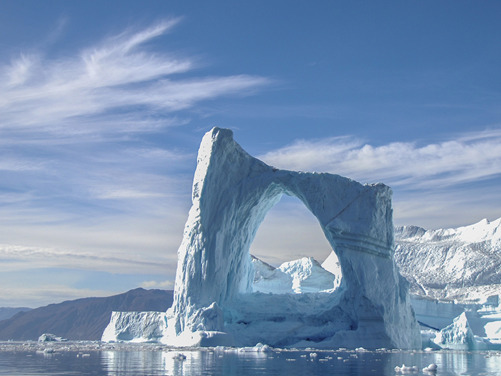
Whether you're spotting the Northern Lights in Sweden or glaciers off the coast of Greenland, the Arctic Circle is a new kind of hidden paradise.
Machu Picchu: Peru

Machu Picchu's panoramic views and intricate (and a tad mysterious) stone walls more than validate the site's worldwide fame.
0 notes
Text
Healthy Habit From Other Countries
Spain: Take a Siesta
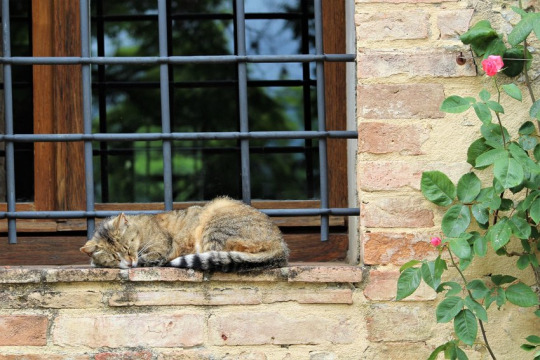
Wander around the streets of Spain in the mid-afternoon and you’ll likely find that most shops are closed. That’s because the country still values the midday nap, called a siesta. The term stems from the Latin word for “sixth hour,” which traditionally fell around noon since the day started at dawn.
Obviously getting some extra zzz’s can make you feel more rested, but there are other physical health benefits, including better heart function, hormonal maintenance, and cell repair, according to a Greek study. Plus the downtime has mental health advantages: A 40-minute nap can improve performance by 34 percent and alertness by 100 percent, according to a NASA study. Even a 20- to 30-minute slumber has been shown to boost mood and reduce accidents.
Not all Spaniards actually sleep during this time — some just use it as an extended lunch break to step away from the grind of the workday. But even that has been scientifically proven to improve attention spans and focus.
Greece: Eat Your Veggies

While the Mediterranean diet of whole grains, beans, nuts, fruits, and vegetables gets much of the hype, the healthy eating habit of the Greeks is actually much simpler than that: Eat your veggies — and a lot of them.
Greeks ingest the highest amount of vegetables in the world per capita, according to a Tufts University study. In fact, just one meal can include up to four servings of veggies — and since many are packed with dietary fiber, they help the body run in tip-top shape. And as an added bonus, vegetable-based diets have been shown to help lose weight. While the Greek salad, made up of tomatoes, cucumbers, bell peppers and olives is a popular choice, also try briám (a roasted tomato, potato, eggplant and zucchini dish) and ladera (oil-based veggie dishes).
Finland: Warm Up in a Sauna
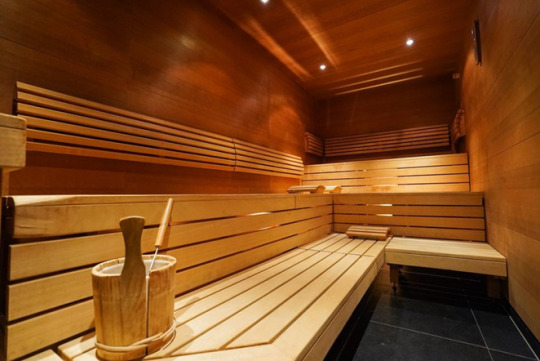
There are an estimated 5.3 million people in Finland — and 2 million saunas, proving just how important getting a good sweat is for the Finns. And they’re definitely onto something since it helps rejuvenate both the skin and heart.
For most people, a short amount of time in a sauna will elicit about a pint of sweat, according to Harvard Medical School. During that process the heart will pump almost double the amount of blood and redirect that extra blood to the skin, leading to a healthier glow and a stronger heart.
Many Finnish homes — even apartments — have their own saunas. The president and prime minister also have official ones. Local etiquette says to take off your clothes, shower, and then sit in the sauna for as long as you’re comfortable — about 15 to 20 minutes — and repeat the process until you feel renewed.
India: Spice Up Your Meals

Those flavorful Indian meals aren’t just a treat for the taste buds — the wide array of spices also have varied health benefits.
As a prime Indian spice, cumin is packed with iron and has been associated with weight loss, while turmeric (another popular spice) contains antioxidants to ease pain and inflammation. Ginger has similar anti-inflammatory properties and can calm an upset stomach, while nutmeg has been shown to fight off bacteria. All three are often used in curry sauces, while turmeric is also used in pickles and chutney.
Meanwhile, saffron — one of the world’s most expensive spices — has a laundry list of benefits, including treating depression and easing PMS. It’s most commonly used to transform basmati rice into saffron rice.
Paraguay: Focus on the Positives

Since 2015, Paraguay has topped the Gallup Global Emotions Report as the most positive nation on the planet. The South American landlocked nation of 7 million may seem like a surprising spot for happiness to prevail, but perhaps it comes down to a couple elements rooted in their native language of Guaraní.
First is the idea of “tranquilo pa” — the first part coming from tranquility in Spanish and adding on the Guarani “pa,” which gives it the connotation of a laid-back approach to life. Additionally, the language has no word for “tomorrow," meaning that they’re a focus on living in the moment and not worrying about the future, providing an overall more positive way of being.
That positive mindset has major physical benefits. According to the Mayo Clinic, positive thinking leads to a greater resistance to the common cold, better cardiovascular health, and an increased life span.
France: Ignore Your Email After Hours

The incessant need to check work email after hours is curbed by the government in France, which passed a 2017 labor law that gives employees the “right to disconnect.” And adopting this habit isn’t just about work-life balance; it has positive mental health benefits as well.
The increasing expectation to check email around the clock has been shown to cause anxiety, according to a Virginia Tech study. The lack of boundaries has an adverse effect on the health of the employee, as well as their families since they’re not fully present.
And it’s not how much time is spent on email, but the expectation to be available that causes those detrimental effects. So put down the phone and relax — it can probably wait until Monday morning.
Japan: Make Meal Portions Pleasurable
0 notes








